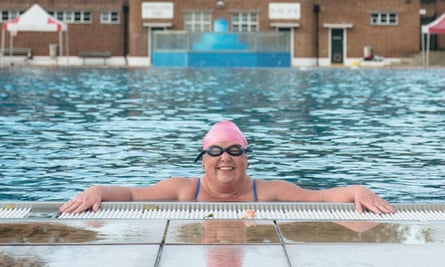The desire to swim the Channel washes over you. And then haunts you. The tragic news last week that an endurance athlete died in the course of his triathlon swim, and the growing focus on completing consecutive crossings, has made me reconsider the tribute I paid to all successful Channel swimmers a few years back. Then I applauded all who achieve it. Now I salute the attempt.
I speak advisedly, as a seasoned open-water swimmer who embarked on her first Swimtrek holiday in 2002 because of a love of the sea and an excitement, bordering on disbelief, that here was a holiday making it possible to swim from one island to another.
Since then I have had the privilege of meeting some of the extraordinary individuals who have, un-wetsuited and at the mercy of water temperatures of 14-18C completed the crossing from Shakespeare beach to Cap Gris Nez, feted among swimmers and beyond. I viewed them first with awe, then with envy; and more recently, with a kind of building guilt, because I know I must sign up.
Between swims in the Greek Cyclades last summer, the guide, who had overseen many a pre-Channel training programme, confirmed its particular hold on those who do it. “The Channel is different. Lots who sign up are fulfilling a spiritual or unrelated goal in their lives. They’re not, necessarily, the best swimmers. Sometimes it’s to address something else, unconnected with swimming.”
Her words had a resonance for me.
A mix of circumstances and bad decisions meant I have never had children. It is an ongoing sense of loss. That there is a relationship between this absence and what a Channel swim attempt has come to represent for me is something I feel but can’t quite articulate. A rite of passage, it would not be instead of but in recognition of what wasn’t. For a fellow swimmer I meet at the London Fields lido, the swim, to which she is already committed, is simply “the hardest thing she could imagine doing”. It is what drew her to it. Another is swimming in memory of her mother.

There is an often-repeated statistic about the number of people who have swum the Channel being smaller than those who have reached the summit of Everest (1,773 at the last registered count). Most are ecstatic to finish, others set on breaking new records. What I’ve learned, and felt, is that this is an intensely personal quest.
For every would-be record-breaker there will be those for whom the attempt arrives with the feel of a calling. Tearful, on a London tube, Sally Goble realised she was going to do it. Her successful swim in 2006 came in spite of having, in her own words, “no competitive instinct” and being a “middle-lane swimmer”. Andy Jones, a US-based entrant who completed his swim this month, says, “I wasn’t a water baby”; this can be a group vying with itself for unpredictable members. Even from afar, I relate to it.
To say the commitment precedes the attempt itself is an understatement. The waiting list can mean signing up with your boat pilot anything from one to two years before your swim. And then to months of training in the unforgiving freeze of Dover harbour.
The swim itself should be 22.5 miles, but most end up covering nearer 30 to compensate for the tides. There’s the risk of hypothermia, jellyfish and hazardous conditions. Yet even the more gruelling descriptions do not quite deter me. A friend put it to me recently that there were numerous “equivalent” crossings in the world. They were warmer and of the same distance. “Have you thought of the Manhattan island swim?” he asked. Yes, I had, in the “intriguing” light of something I knew I was never going to do.
And the lure of the Channel swim is not limited to those living in England. Among others, Japanese, Australians and Swiss have undertaken it. “Iconic” may be an overused term, but in this instance it is an internationally understood one.
To break a record. For something that didn’t happen, or for something that did. The Channel has its reasons.
